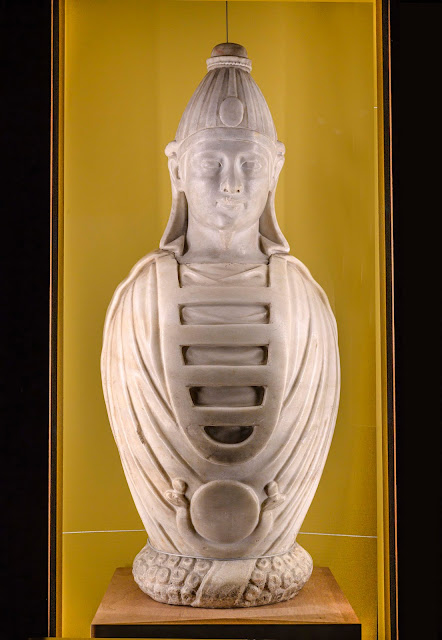Osiris-Canopus and the awakening of Osiris at the Ronald Reagan Presidential Library and Museum
Osiris-Canopus with stylized atef crown 2nd century CE from the Temple of Ras El-Soda and the awakening of Osiris crowned by a tcheni in precious metal 26th dynasty (664-525 BCE) from the Egypt's Lost Cities exhibit at the Ronald Reagan Presidential Library and Museum through April 12, 2020.
Excavated in 1936 by Achille Adriani, director of the Alexandria Museum, the Temple of Ras El-Soda was originally found just east of early 20th century Alexandria between the sea and the road to Abu Qir. It is a small Ionic prostyle tetrastyle temple constructed of limestone blocks and marble columns. In the cella were found five marble sculptures including Isis, Osiris-Canopus (also known as Osiris Hydreios) type A, Osiris-Canopus type B, Hermanoubis, and Harpokrates. The temple was dated to the second century CE based on the sylistic analysis of the statuary and the lettering of an inscription on a pillar. In Boëthius and Ward-Perkins' authoritative overview of Etruscan and Roman architecture, they point out that the high podium of the Temple of Ras El-Soda hints at Roman influence as well so concur with the second century CE dating. Researchers point to a few comparable temples in Formia (2nd century BCE) and Vastogirardi (mid-second century BCE) in Italy and Agrigento (second century BCE to early 1st century BCE) on Sicily that are not traditional Etrusco-Italic podium temples but hybrids like Ras el-Soda.





Comments
Post a Comment